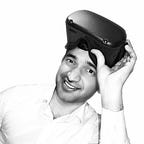Photogrammetry Process
Photogrammetry seemed like the right choice for this project; on the surface, the process appears to be easy and relatively accessible, in a sense that everyone has a camera phone on their person at all times these days. All you have to do is walk around the object you want to make a scan of, rapidly clicking the shutter. You can (and should) take these photos at varying angles and focal lengths. To get a good scan of something, you need to take at least 60 pictures, but the more the better.
To create the models for this project, we used the free 30 day trial of Agiosoft’s Metashape. The workflow of Metashape is relatively easy; after uploading the photos, you align them; from the alignment, a dense cloud is created; from the dense cloud, a mesh is created, and then finally, you can render a texture. It’s really straight forward, and the most difficult thing about the photogrammetry process is patience.
There are a few challenges with this software, which don’t make things impossible, but are rather annoying. For one thing, the process of building a mesh from hundreds of photos takes forever to render. At the very least, two hours, but at one point, eight hours, and it is something you intermittently must check up on, because it might pause itself. Metashape is, as I discovered, prone to crashing. The second biggest complication is related to importing the model (as an .obj) into another 3D modeling program, such as Unity or Cinema 4D. The shear size and complexity of the meshes make it difficult to load and move. Specifically in Unity, I found that at times that the textures would not load, and a new texture could not be applied unless I rendered and exported the models from Metashape.
The software can’t necessarily isolate the intended object of your scan either. For example, if you were to scan a chair sitting in front of a brick wall, fragments of the wall will definitely be apart of the scan. There is an option within Metashape to mask out the intended object, but the process is rather tedious, as you have to do this for every single picture.
The 3D renderings are often imperfect, fragmented, bulbous, and distorted. For the aesthetic purpose of this project, that was perfect. We wanted to show technology as it becomes e-waste as dystopian and horrific. This approach to photogrammetry should definitely not be used with the intent of reproducing something polished or realistic.
This group project is a guide for activism about electronic waste. It uses augmented reality and photogrammetry to express opinion. The project members include Jazsalyn, Tiffany Topor, Sonia Colunga, Yashwanth Iragattapu, and I, Akshansh Chaudhary.
